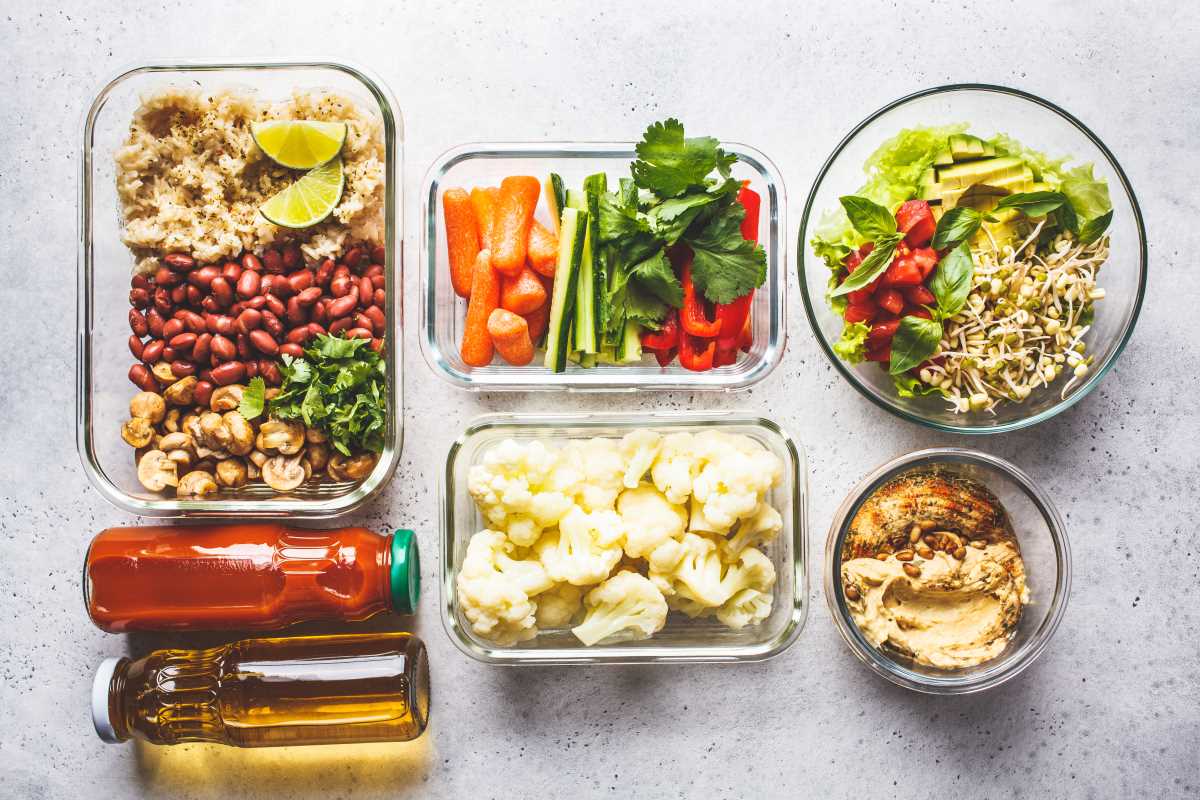Food expenses often account for a significant portion of the monthly budget, yet this is one area where meaningful savings can often be achieved with just a few adjustments. The good news? You don’t need to become a master chef, spend hours in the kitchen, or completely overhaul your diet to save money. By making small, strategic changes, you can reduce your food costs without compromising on quality, taste, or convenience. Whether it’s planning meals more effectively, buying in bulk, or cutting back on takeout, there are plenty of easy ways to make a difference. Here are 10 surprisingly simple strategies to help you get started on saving while still enjoying the food you love.
1. Plan Your Meals Ahead of Time
Meal planning is one of the most effective ways to control food spending. By deciding what you’ll eat for the week, you can make a focused grocery list and avoid unnecessary purchases.
How It Helps Save Money
- Reduces impulse buys and last-minute takeout orders.
- Ensures you buy only what you need, reducing waste.
Check your pantry and fridge before making your plan. Use ingredients you already have to create meals, and only shop for the missing elements.
2. Stick to a Grocery List
Random shopping trips without a plan lead to overspending. A detailed grocery list keeps you organized and focused on your budget.
How It Helps Save Money
- Prevents unplanned purchases.
- Helps you avoid marketing traps like end-cap displays or in-store promotions on items you don’t need.
Organize your list by store sections (produce, dairy, meat, etc.) to streamline your shopping trip and avoid wandering into unnecessary areas.
3. Take Advantage of Store Loyalty Programs
Many grocery stores offer loyalty programs that include discounts, reward points, or coupons customized to your shopping habits.
How It Helps Save Money
- Provides access to exclusive member-only sales.
- Accumulates rewards that can be redeemed for future savings.
Sign up for multiple loyalty programs if you shop at more than one store. Use apps like Fetch Rewards or Ibotta to further maximize your savings.
4. Compare Unit Prices
When shopping, it’s easy to focus on the item price without noticing the unit price (cost per ounce, pound, or liter). Comparing unit prices is key to spotting the best deal.
How It Helps Save Money
- Allows you to identify value across different brands or package sizes.
- Helps you avoid paying more for convenience-sized packaging.
Stores often display the unit price on shelf labels. For example, a larger pack of rice may have a lower per-pound cost than smaller bags.
5. Buy Generic or Store Brands
Name-brand items are often more expensive simply because of their brand recognition. Switching to generic or store-brand versions of staples like bread, cereal, or canned goods can cut costs significantly.
How It Helps Save Money
- Offers nearly identical quality at a fraction of the price.
- Avoids the markup associated with branding and advertising costs.
Start with non-perishable items first. Test a few store-brand options and stick with the ones you like to maximize savings.
6. Buy in Bulk (But Wisely)
Buying in bulk can save money, especially on non-perishable items or food you use frequently. However, it’s important to avoid overbuying perishable items that might go to waste.
How It Helps Save Money
- Lowers the unit price for pantry staples like rice, pasta, or beans.
- Reduces the frequency of shopping trips, which can also help you save.
Before purchasing in bulk, ensure you have enough storage space and double-check expiration dates. Bulk-buying is especially useful for families or households that consume higher quantities of items like snacks or beverages.
7. Reduce Food Waste
Throwing out food is like throwing away money. Managing your fridge and pantry effectively helps reduce waste.
How It Helps Save Money
- Maximizes the value of the food you purchase.
- Prevents overbuying items that spoil before you use them.
Adopt a “first in, first out” rule. Place older items at the front of your fridge or pantry so they get used before newer ones. Apps like Too Good To Go can also help you save on surplus food.
8. Avoid Shopping When You’re Hungry
A hungry shopper is more likely to make impulse buys and overspend. Always shop on a full stomach.
How It Helps Save Money
- Keeps your focus on your grocery list instead of cravings.
- Helps you resist snacks and other “treats” that aren’t part of your plan.
If you can’t avoid shopping later in the day, have a small snack beforehand to curb hunger.
9. Cook Once, Eat Twice
With a little forethought, cooking larger portions can save you time and money. Preparing extra servings that can be used for additional meals cuts down on food waste and prevents costly last-minute decisions to dine out.
How It Helps Save Money
- Reduces the need for separate ingredients for every meal.
- Saves time by giving you ready-made leftovers for busy nights.
Batch-cook items like pasta, soup, or casseroles. Divide them into single-serving containers and freeze them for easy grab-and-go meals later in the week.
10. Skip the Fancy Drinks
Soft drinks, bottled water, or pricey coffee-shop beverages can quietly drain your budget. Cutting them out or reducing their frequency can lead to noticeable savings.
How It Helps Save Money
- Lowers your grocery bill by focusing on basic essentials.
- Eliminates unnecessary spending on premium prices for packaging or convenience.
Invest in a reusable water bottle or coffee thermos to avoid buying single-use drinks. Make your coffee at home for a fraction of the cost.
Start by incorporating just one or two of these tips into your routine and see how much they save you. Over time, these changes will add up, leaving you with more money to reach your larger financial goals.

.jpg)





